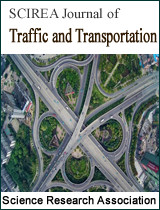Comprehensive Anomaly Detection in Ghana: Addressing Social, Economic, and Security Challenges Through Transfer Learning in Traffic Surveillance
DOI: 10.54647/tte580069 21 Downloads 48274 Views
Author(s)
Abstract
The abstract presents a comprehensive overview of the social and economic challenges faced by Ghanaians, including high inflation, currency depreciation, and a surge in violent crimes such as armed robberies and murders. It highlights the alarming increase in road accidents, emphasizing their significant impact on mortality rates and the country's GDP. The document expresses concern about the poor response time of security agencies to these anomalies, leading to reputational consequences and a potential deterrent for foreign investors. The Inspector General of Police aims to reduce response time, but existing solutions focus on specific types of anomalies. The abstract proposes using transfer learning, specifically the DenseNet121 method, to detect various anomalies in traffic surveillance videos. The study details the training process, dataset augmentation, and model evaluation. While the proposed model shows positive results in identifying anomalies in certain conditions, the abstract suggests the need for improved models to handle long-distance, poor coverage, and hazy environment scenarios in future research.
Keywords
Ghana, Anomalies, Transfer learning, DenseNet121, Security agencies, Response time
Cite this paper
Isaac Opei, Isaac Azure, Anas Musah,
Comprehensive Anomaly Detection in Ghana: Addressing Social, Economic, and Security Challenges Through Transfer Learning in Traffic Surveillance
, SCIREA Journal of Traffic and Transportation.
Volume 6, Issue 1, February 2024 | PP. 1-22.
10.54647/tte580069
References
| [ 1 ] | D. Khorasani-Zavareh, H. Khankeh, R. Mohammadi, L. Laflamme, A. Bikmoradi, and B. J. A. Haglund, “Post-crash management of road traffic injury victims in Iran. Stakeholders’ views on current barriers and potential facilitators,” BMC Emerg Med, vol. 9, May 2009, doi: 10.1186/1471-227X-9-8. |
| [ 2 ] | J. M. Caplan and L. W. Kennedy, “Police-monitored CCTV cameras in Newark, NJ: A quasi-experimental test of crime deterrence,” J Exp Criminol, vol. 7, no. 3, pp. 255–274, Sep. 2011, doi: 10.1007/s11292-011-9125-9. |
| [ 3 ] | A. Glowacz, M. Kmie?, and A. Dziech, “Visual detection of knives in security applications using Active Appearance Models,” Multimed Tools Appl, vol. 74, no. 12, pp. 4253–4267, Jun. 2015, doi: 10.1007/s11042-013-1537-2. |
| [ 4 ] | J. , Whitten, L. D. Bentley, and K. C. Dittman, “Systems Analysis and Design Methods 5e,” McGraw-Hill Higher Education, vol. 5, 2000. |
| [ 5 ] | W. H. A, “Research design: Qualitative, quantitative, and mixed methods approaches 74(48), 9263–4267.,” 1991. |
| [ 6 ] | C. . K. M, “Research designs and variables - sage research methods 85(28),” vol. 40, no. 2, pp. 145–158, 1998. |
| [ 7 ] | U. Califonia State, “Quantitative Research - Research Methods Simplified - Research Guides & Library How-To at California State University Sacramento.” Accessed: May 25, 2023. [Online]. Available: https://csus.libguides.com/res-meth/quant-res |
| [ 8 ] | M. J, “Research design and dissertation: Unstructured interview methods ,” pp. 28–85, 1995. |
| [ 9 ] | F. J, “The relationship between interviewer-respondent rapport and data quality.,” 1993. |
| [ 10 ] | A. L. O. A. O. T. M. O. Adeniyi, “Essentials of Business Research ,” Research Gate, 2011. |
| [ 11 ] | E. A. O. T. Akinade, “Research Methods: A Pragmatic Approach for Social Sciences, Behavioural Sciences and Education,” 2009. |
| [ 12 ] | J. A. Avwokeni, “Research Methods: Process, Evaluation & Critique. Portharcourt: UnicampusTutorial Services,” 2006. |
| [ 13 ] | I. Etikan, “Comparison of Convenience Sampling and Purposive Sampling,” American Journal of Theoretical and Applied Statistics, vol. 5, no. 1, p. 1, 2016, doi: 10.11648/j.ajtas.20160501.11. |
| [ 14 ] | J. W. Creswell, CRESWELLQualitative-Inquary-and-Research-Design-Creswell. 2013. |
| [ 15 ] | A. Mugenda&Mugenda, “ Qualitative and Quantitative Research Methods.Nairobi: Acts Press ,” 2003. |
| [ 16 ] | S. J. Niranjan et al., “Bias and stereotyping among research and clinical professionals: Perspectives on minority recruitment for oncology clinical trials,” Cancer, vol. 126, no. 9, pp. 1958–1968, Jan. 2020, doi: 10.1002/cncr.32755. |
| [ 17 ] | G. Huang, Z. Liu, L. Van Der Maaten, and K. Q. Weinberger, “Densely Connected Convolutional Networks,” Proceedings - 30th IEEE Conference on Computer Vision and Pattern Recognition, CVPR 2017, vol. 2017-January, pp. 2261–2269, Aug. 2016, doi: 10.48550/arxiv.1608.06993. |
| [ 18 ] | T.-Y. Lin and S. Maji, “Improved Bilinear Pooling with CNNs,” Jul. 2017, [Online]. Available: http://arxiv.org/abs/1707.06772 |
| [ 19 ] | B. Zhou, A. Khosla, A. Lapedriza, A. Oliva, and A. Torralba, “Learning Deep Features for Discriminative Localization.” [Online]. Available: http://cnnlocalization.csail.mit.edu |
| [ 20 ] | M. D. Zeiler and R. Fergus, “Visualizing and Understanding Convolutional Networks,” Nov. 2013, [Online]. Available: http://arxiv.org/abs/1311.2901 |
| [ 21 ] | S. W. Khan et al., “Anomaly Detection in Traffic Surveillance Videos Using Deep Learning,” Sensors, vol. 22, no. 17, Sep. 2022, doi: 10.3390/s22176563. |

